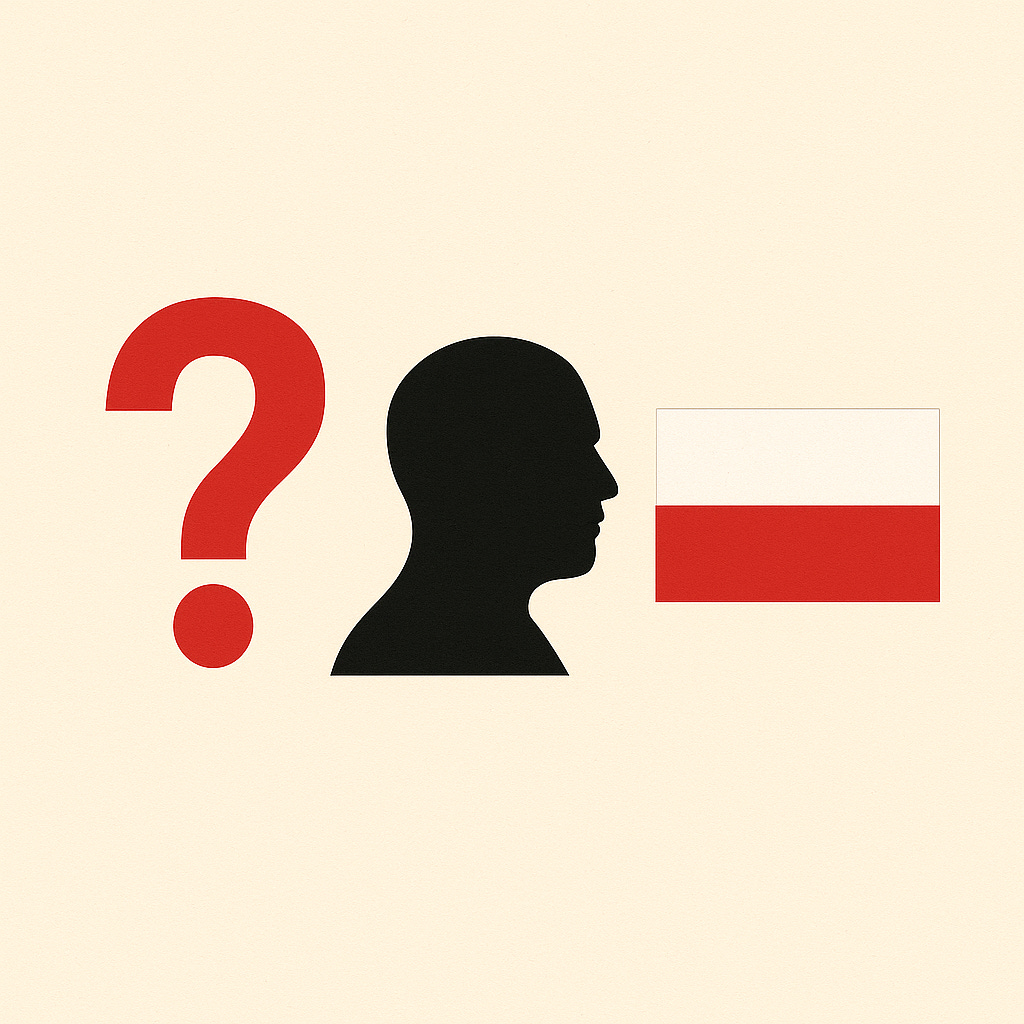Who will win the Polish presidential election?
How Poland’s nationalist right will shape the 2025 election.
June 1, 2025
📈 Contract Closed, Case Closed
The nationalist right delivered. Nawrocki won, and traders who trusted the numbers, not the noise, printed on YES at 39¢.
The Deciding Vote Will Come From the Nationalist Right
Poland’s 2025 presidential election has become the ultimate test of whether Central Europe turns toward the liberal, pro-European path or stands with Trump-style national sovereignty. We’ll unpack who is who for American readers.
This week, the prediction market shows Rafał Trzaskowski on top at 62¢, with Karol Nawrocki down at 39¢. But these prices ignore how strong Poland’s nationalist right has become and do not factor in the real challenges facing Trzaskowski.
Follow the market: Who will win the Polish presidential election? on Kalshi.com
Poland’s Politics: A Quick Guide for U.S. Readers
Polish politics today revolves around three main blocs, each with an American‑familiar analogue. Civic Platform (PO), now re‑branded as the Civic Coalition (KO, is a centrist, pro‑European Union force much like the U.S. Democratic mainstream. Its standard‑bearer in 2025, Rafał Trzaskowski, is the tech‑savvy mayor of Warsaw who campaigns on closer EU ties, green investment, and social liberalism.
On the right sits Law and Justice (PiS), Poland’s dominant nationalist‑conservative party since 2015. Think of PiS as a fusion of Trump‑era populism and old‑school Christian democracy: skeptical of Brussels, big on social spending for families, and rhetorically tough on immigration and LGBTQ issues.
PiS is not fielding its own celebrity this cycle; instead it has thrown its considerable machine behind Karol Nawrocki, a historian who heads the Institute of National Remembrance and champions a “Poland First” line.
Flanking PiS is the harder‑edged Confederation (Konfederacja) alliance, led in large part by libertarian firebrand Sławomir Mentzen. Confederation mixes Ron Paul‑style small‑government economics with culture‑war nationalism and euroskepticism. Its backers are young, online, and angry at what they see as EU overreach and Warsaw “elites.” In the first round they grabbed over 15 percent of the vote, making them the kingmakers whose runoff endorsement could tip the balance.
Add in the personal endorsement of Donald Trump for Nawrocki and you have a contest that maps neatly onto the wider clash between liberal Euro‑Atlantic integration and a resurging “national sovereignty” right. Understanding where each of these players stands on that spectrum is crucial to seeing why the race is far tighter than headline polls or prediction‑market prices suggest.
Reality Check: Who Really Holds the Power?
This election will not be decided by the loud crowds in Warsaw, but by the many voters across Poland’s heartland. In the first round, Trzaskowski led by only 1.9 percentage points, while the nationalist right, including Sławomir Mentzen and other hardline candidates, took over 15% of the vote. This group of voters, angry at European Union rules, left-wing policies, and decisions made by city elites, now holds the balance. Both Trzaskowski and Nawrocki are polling around 47%, but it’s clear that the Mentzen and Confederation supporters will decide who wins.
The Law and Justice party (PiS) is still the best at getting its base out to vote, and Nawrocki has fully backed all eight policy points demanded by Mentzen’s group. This almost guarantees he’ll get not only their public support but also the ground-level help needed to win. Plus, Donald Trump has given his endorsement to Nawrocki, and Europe’s establishment is moving right as countries realize the EU and globalism have weakened them.
Where the Market Is Getting It Wrong
Even though Trzaskowski is ahead in the market, there are clear signs pointing to a late surge for Nawrocki and Poland’s conservatives. These signs include voting patterns seen across Europe, big rallies, and recent deals made on the right. The 62¢ price for Trzaskowski looks like wishful thinking from city liberals and Western media, not a realistic picture of Poland’s voters.
We keep seeing the same mistake: markets and pollsters discount how many late-deciding conservative voters turn out on election day. This happened in Trump’s 2016 win, Brexit, and with other conservative victories. Thinking Trzaskowski is a lock while rural, anti-EU voters are still uncommitted is just repeating old errors.
What Media and Markets Keep Missing
Nawrocki has promised to follow all many of Mentzen’s key demands, which shows he’s serious about bringing the hard-right voters fully behind him. At the same time, Prime Minister Tusk and his government have clearly shown signs of worry, which is a red flag about the health of Trzaskowski’s coalition. Trump’s impact on European politics has been huge, creating a shift to the right that mainstream outlets still won’t talk about, even though it’s shaking up old political alliances.
Market Breakdown (as of May 26, 2025)
Rafał Trzaskowski (YES, 62¢): ❌ Overpriced
Karol Nawrocki (YES, 39¢): ✅ Underpriced
Szymon Hołownia (YES, 1¢): Ignore
Sławomir Mentzen (YES, 1¢): Ignore
All others (YES, 1¢): Ignore
Answering the Critics
Some believe that Trzaskowski is strong because of his large city rallies, headlines in Western press, and deals with more moderate parties. But this view comes from a media bubble. Crowds in Warsaw do not hide the anger found in rural Poland, and centrist alliances in Polish politics are known to fall apart fast. The same errors in polling and analysis that missed Trump’s win, Brexit, and the rise of Italy’s Meloni are showing up again here.
Strategic Recommendation: ✅
Buy Karol Nawrocki (YES) at 39¢ or below, because this is much too low for someone with real voter power behind him. There is a high chance for profit as the market reacts to last-minute pro-Nawrocki news, especially since there’s enough trading going on for you to get out if you need to. Stay away from the other contracts.
The MAGA-style right is about to win in Poland, and those who move now will benefit as reality catches up to the market.

